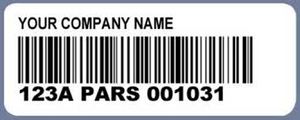Carrier Code (CBSA)
| This article is part of the Customs Glossary Guide |
A Highway Carrier Code is a unique identifier assigned by the Canada Border Services Agency (CBSA) to highway carriers engaged in transporting goods between Canada and other countries. This code plays a crucial role in facilitating cross-border trade and enables the CBSA to track and manage shipments transported by highway carriers. This article defines what a Highway Carrier Code is with the Canada Border Services Agency and explores the scenarios in which it is used when shipping goods to Canada.

What is a Highway Carrier Code with Canada Border Services Agency?
The Highway Carrier Code is a four-character alphanumeric identifier assigned by the Canada Border Services Agency to highway carriers (truckers) involved in the movement of goods across the Canadian border. It serves as a means of identification and clearance for carriers involved in cross-border trade. The code is used to link the carrier's information, including their compliance history, with specific shipments, streamlining the customs clearance process and ensuring efficient border security measures.
Scenarios in Which a Highway Carrier Code is Used for Shipping to Canada:
Commercial Cross-Border Shipments:
Scenario: A trucking company in the United States transports goods to Canada. Usage of Highway Carrier Code: The trucking company applies for a Highway Carrier Code from the CBSA before engaging in cross-border shipments. The assigned code is used in customs declarations and manifests to identify the carrier responsible for the shipment.
Import and Export Declarations:
Scenario: A carrier transports goods from Canada to the United States for export. Usage of Highway Carrier Code: The carrier uses their Highway Carrier Code on the export declaration submitted to the CBSA. The code ensures that the carrier's compliance history and eligibility for customs clearance are verified, promoting smooth cross-border movements.
FAST Program Participation:
Scenario: A carrier participates in the Free and Secure Trade (FAST) program, which expedites border crossings for low-risk shipments. Usage of Highway Carrier Code: The carrier's Highway Carrier Code is linked to their FAST program membership, allowing for expedited processing and reduced inspection times at designated FAST lanes.
Customs Compliance and Security Measures:
Scenario: A trucking company transports hazardous materials into Canada. Usage of Highway Carrier Code: The carrier's Highway Carrier Code is referenced in customs declarations and manifests for hazardous materials shipments. The CBSA uses this information to apply the necessary security measures and ensure compliance with regulations.
Temporary Imports and Exports:
Scenario: A carrier transports equipment temporarily exported from Canada for repair or maintenance. Usage of Highway Carrier Code: The carrier's Highway Carrier Code is used in the customs declaration for the temporary export. When the equipment is re-imported, the code is referenced to facilitate smooth customs clearance.
Conclusion:
The Highway Carrier Code is a crucial element in shipping goods to Canada, allowing the Canada Border Services Agency to efficiently track and manage the movement of goods across the Canadian border by highway carriers. By using their assigned code in customs declarations and compliance programs, carriers can ensure seamless and secure cross-border trade. The Highway Carrier Code fosters smoother logistics operations, enhances border security measures, and supports efficient customs clearance processes for highway carriers engaged in shipping to Canada.
How to Get a Highway Carrier Code
Carrier codes are issued and maintained by CBSA. Carriers can apply for a carrier code by filling out the application which can be found on CBSA's website.
For carriers crossing the border into Canada, the carrier code is required to be the beginning of the conveyance reference number (trip number) of their ACI eManifest, as well as the beginning of any Cargo Control Number being used to identify freight.